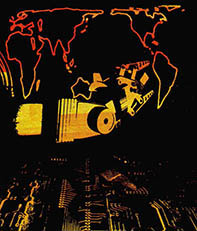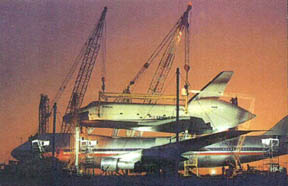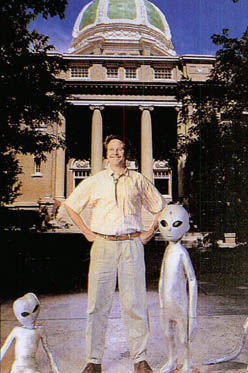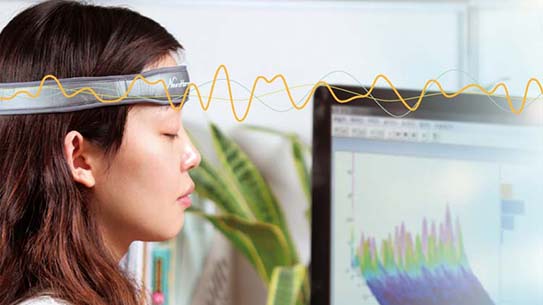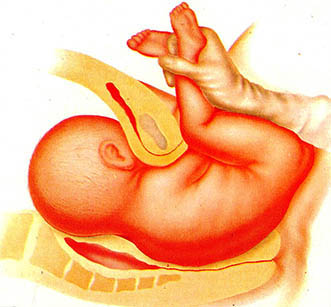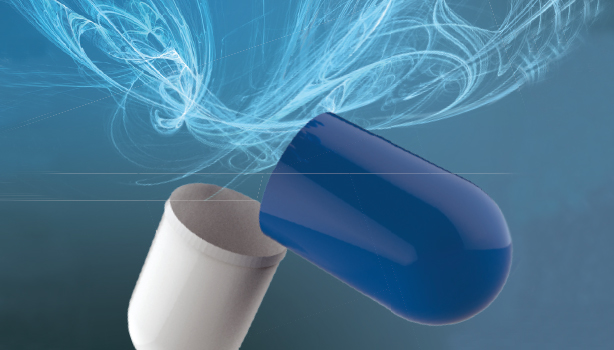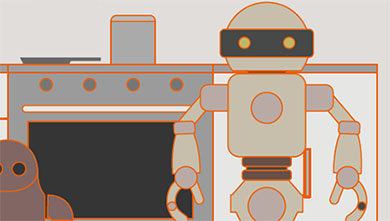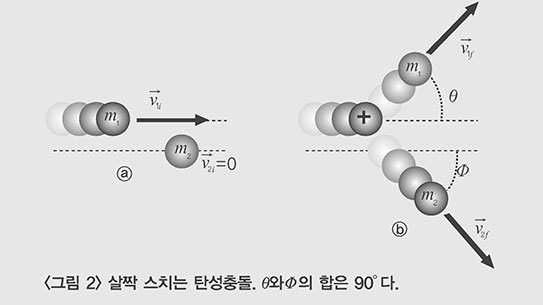2월에 있었던 미국과학진흥협회 모임에서 인간이 우주공간에서 살고 일하는 능력에 의문이 던져졌다.
이 경우 악한은 우주선(線)이다.
우주선은 깊은 공간에서 항성의 폭발이나 블랙홀 같은 격렬한 사건들에 의해 만들어진다. 그것은 아주 강력한 하전입자들로 돼 있는데 그 대부분은 빈 성간공간 그리고 아마도 은하들 사이를 질주하는 양성자들이다. 우주선의 길은 전자기장을 지나는 동안 꼬이고 구부러져 모든 방향으로부터 지구에 충돌하는 것으로 끝난다.
이 우주선은 대기를 때려 그 원자와 분자들을 치고 지구 표면을 때리는 "2차방사능"을 만든다. 그것은 너무나 강력해서 사람을 포함해 앞을 막는 무엇이든지 통과하며 지구 속에 묻힌다.
인체를 통과하는 동안 방사능은 분자들을 공격해 손상을 입힌다. 보통 이 손상은 대단한 것은 아니어서 인체가 그것을 고칠 수 있다. 그러나 가끔 우주선은 유전자를 때려 그 구조를 바꿈으로써 "돌연변이"를 일으킨다. 이 돌연변이는 암 또는 다른 바람직하지 않은 조건을 가져올 수 있다.
그러나 지구의 대기가 우주선의 충돌을 많이 흡수하고 약화해서 비교적 해롭지 않게 만든다. 우리에게 도달하는 양은 분명히 치명적은 아니다. 생명은 수십억년 동안 우주선의 위협을 눈에 띄게 받지 않고 계속되었기 때문이다.
사실상 어떤 사람들은 우주선의 충돌이 긴요하다고 생각한다. 그것이 일으키는 돌연변이는 일반적으로 해로우나 가끔 그것은 실제로 유용할 수 있다. 진화과정은 이런 드문 유용한 돌연변이에 의해 진행한다. 우주선 없이는 진화가 늦어져 오늘날도 지구 위에는 박테리아보다 더 발달된 생명이 없을 정도일 것이라고 생각하는 사람들이 있다.
그러나 이 모든 것은 대기의 보호에 달려 있다. 높이 올라갈수록 위에는 공기가 더 조금 있고 받는 우주선의 양은 늘어난다. 해발 1마일의 콜로라도 덴버에 사는 사람들은 해수면에 사는 로스앤젤레스나 뉴욕 사람들보다 훨씬 더 많은 우주선을 받는다(그러나 덴버 사람들은 충분한 보호를 받는다). 아주 높은 하늘을 나는 비행기 안의 사람들은 더 많은 우주선을 받지만 그들은 한번에 몇시간 동안 노출될 뿐이다.
하지만 사람들이 대기권 밖에서 움직여 우주선의 보호를 전혀 못받을 때 어려움이 생긴다. 그들은 우주선을 최대한으로 듬뿍 받는다. 물론 우주비행사들은 달에 닿았다가 아무 부작용 없이 돌아왔다. 우주왕복선 비행사들도 부작용을 겪은 일이 없다. 그러나 여기서 우리는 약 한 주일의 노출을 이야기하고 있다. 소련 우주인들은 1년이나 우주에 머물렀고 무중력상태에서 살았기 때문에 상당한 생리적 변화를 겪었다(그들의 뼈는 칼슘을 잃고 근육은 정상상태를 벗어난다). 그러나 우주인들이 우주공간에서 1년 반이나 있어야 하는 화성으로의 비행을 얘기한다면 어떨까. 오랜 시간 화성 위를 걸어다니는 사람들을 상상한다면 어떨까? 인간이 일생을 살고 싶어할지도 모를 작은 독립세계인 우주정착지를 건설한다고 생각한다면 어떻게 될 것인가.
우리가 걱정해야 하는 것은 보통 양의 우주선 뿐만은 아니다. 가끔 태양은 표면에서의 작은 폭발 "플레어"를 만들어낸다. 이것은 보통 우주선만큼 강력하지는 않으나 우주공간에 있는 무방비상태의 인간에 손상을 줄 정도로는 강한 활동적인 방사선을 분출한다.
무엇을 해야 할 것인가?
확실히 우주공간에 있는 사람들은 보호돼야 할 것이다. 만일 우주선과 우주정착지가 알루미늄과 같은 금속 안에 들어 있다면 우주선이 이 금속을 채워 똑같이 해로운 중성자 복사를 일으킬 수 있다.
아마도 달에서 취한 물질을 압축해 우주선 외부에 층을 만듦으로써 암벽의 보호를 받는 듯한 효과를 얻을 수 있다. 그것도 우주선으로 채워질 수 있을지 모르지만 말이다.
국립항공우주국에 있는 물리학자 라인 실버버그는 물이 효과적인 장애물이라고 말한다. 그는 사이에 물이 있는 일종의 이중벽(二重壁)을 그리고 있다. 그는 4인치 두께의 물이, 암의 위험이 지구 위에서보다 2퍼센트 밖에 늘어나지 않을 때까지 우주선 복사를 줄일 것이라고 믿는다.
그러나 이런 보호는 갑작스런 태양의 플레어의 경우에는 불충분할 것이다.
이 모든 것 외에도 무중력상태에 오래 노출됨으로 말미암아 지속적인 뼈의 광물질 제거와 근육소모증 같은 심각한 결과가 나타날지 모른다. 우리는 화성에 도착해 겨우 걸을 수 있는 우주비행사를 상상할 수 있다.
At a meeting of the American Association for the Advancement of Science in February, doubt was cast upon the ability of human beings to live and work in space.
The villains in the case are the cosmic rays.
Cosmic rays are produced by violent events in deep space, such as the explosion of stars, or the activity of black holes. They consist of extremely energetic, charged particles, mostly protons, that speed through the emptiness of interstellar space, and, possibly even between the galaxies. Their paths twist and curve as they pass through electromagnetic fields and they end up bombarding the Earth from all directions. These cosmic rays strike our atmosphere, smashing their atoms and molecules, and forming "secondary radiation" that strikes Earth's surface and is so energetic that it passes through anything in its way, including human beings, and buries itself in the Earth.
While passing through the human body, the radiation slams into molecules and damages them. Usually, this damage is not significant and the body can repair it. Every once in a while, however, a cosmic ray may strike a gene and change its structure, producing a "mutation." This mutation can bring about a cancer or some other undesirable condition.
However, the Earth's atmosphere absorbs and weakens much of the cosmic ray bombardment and renders it relatively harmless. The amount that reaches us is clearly not fatal since life has continued for billions of years without being noticeably endangered by cosmic rays.
In fact, some people think cosmic ray bombardment is essential. The mutations it causes are generally harmful, but every once in a while, one can be actually useful. The process of evolution proceeds by the random production of such rare, useful mutations.
Without cosmic rays, some think, evolution would be slowed to such an extent that even today there might be no life on Earth more advanced than bacteria.
All this, though, depends on the protection of the atmosphere. As you go higher, less air is above you and the amount of cosmic rays you receive is increased. People who live in mile-high Denver, Colo., get considerably more cosmic rays than the people of Los Angeles or New York, who live at sea level. (Nevertheless, the people in Denver are still sufficiently protected.) People in planes that fly at very high altitudes get still more cosmic rays, but they are exposed for only a few hours at a time.
The difficulty arises, though, when people move beyond the atmosphere, and receive no protection at all from cosmic rays. They get them full-strength and in full quantity.
Of course, our astronauts have reached the moon and returned with no ill effects. The space shuttle astronauts have suffered no ill effects. Here, however, we are talking of exposures of, perhaps, a week. Some Russian cosmonauts have stayed in space for as long as a year, and have suffered considerable physiological changes (their bones lose calcium and muscles lose tone) from living in zero-gravity conditions.
But what if we talk about a flight to Mars where the astronauts would have to remain in space for a year and a half? What if we imagine people working on the moon over extended periods of time? What if we imagine the building of space settlements, little independent worlds, in which human beings may wish to spend all their lives?
Nor is it only the ordinary quantity of cosmic rays we need worry about. Every once in a while the sun produces "flares", small explosions on its surface. This produces a burst of energetic radiation, not as powerful as cosmic rays, usually, but powerful enough to damage unprotected human beings in space.
What is to be done?
Obviously, people in space will have to be shielded. If spaceships and settlements are enclosed in some metal, such as aluminum, cosmic rays could saturate these metals and produce a neutron radiation that would be just as harmful.
Possibly material from the moon could be compacted and layered on the outside of space vessels, giving them the protection of rock, though I don't know if that, too, could be saturated by cosmic rays.
One physicist at NASA, Rein Silberberg, says that water would be an effective barrier. He visualizes a kind of double wall with water in between. He believes that a 4-inch thickness of water would reduce the cosmic ray radiation to the point that the risk of cancer would be increased by only 2 percent over that on Earth.
This protection, however, might be inadequate in the case of a sudden solar flare.
On top of all this there might be serious consequences of long-term exposure to zero gravity, such as steady bone demineralization and muscle atrophy. We can imagine astronauts arriving on Mars and being barely able to walk.
(C)1990, Los Angeles Times syndicate
이 기사의 내용이 궁금하신가요?
기사 전문을 보시려면500(500원)이 필요합니다.
1990년 05월 과학동아 정보
🎓️ 진로 추천
- 항공·우주공학
- 물리학
- 생명과학·생명공학







